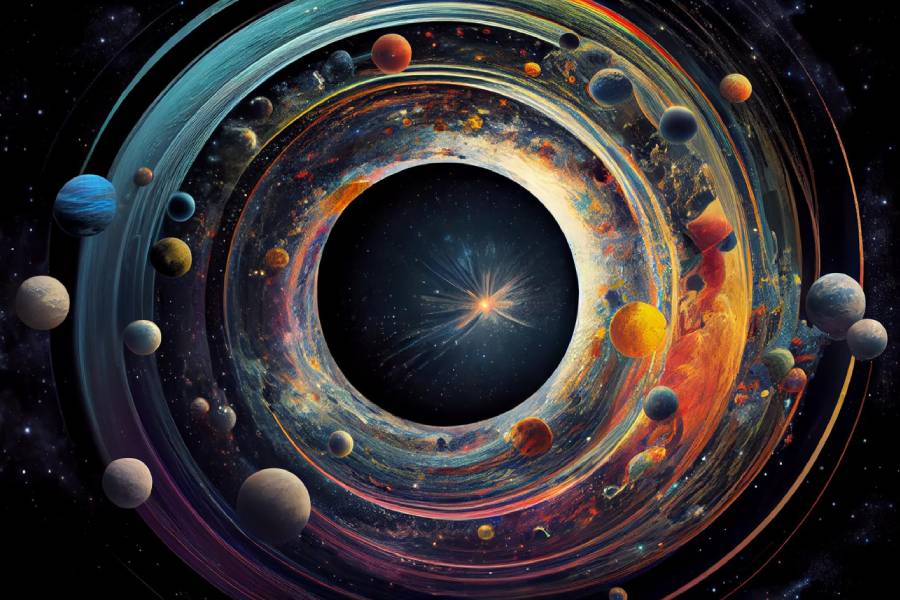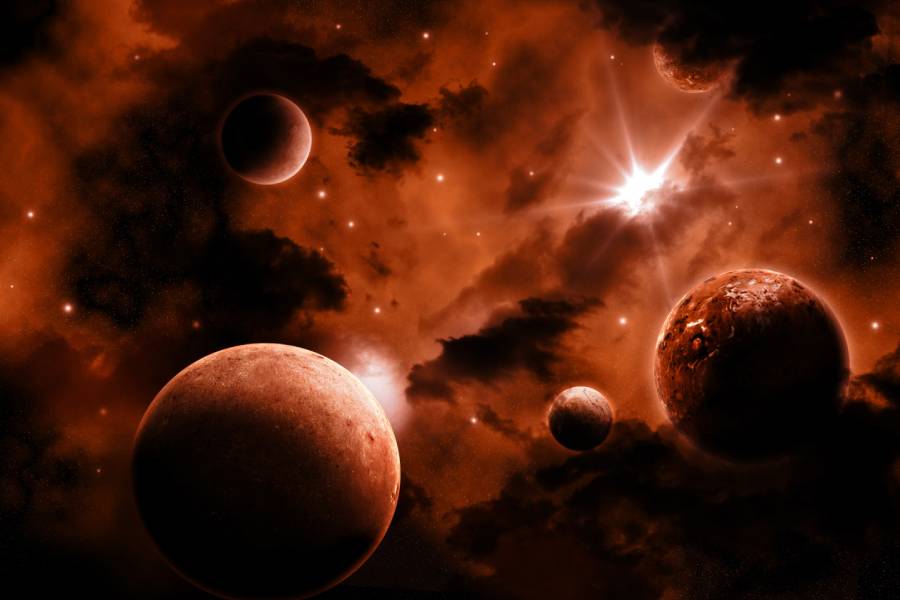Beyond the most distant major planet in our solar system, you will find a cryptic, doughnut-shaped Kuiper Belt. But what is a Kuiper Belt? Why is the Kuiper Belt important?
We will unveil facts about the Kuiper Belt by unmasking this region’s anatomy, origins, and characteristics, containing relics from our solar system’s formation. Chart major Kuiper Belt objects from dwarf worlds like Plutino Makemake and Haumea to icy swarms and rogue wanderers that carve this solar suburb.
We will explore the Kuiper Belt definition and ideas about how it developed around Neptune in the solar system’s early days. We will also look at processes that shifted some objects into irregular orbits long ago. Let’s start!
What Is a Kuiper Belt?
The Kuiper Belt is a region in the outer solar system extending beyond the orbit of Neptune and containing a vast population of small, icy celestial bodies.
But who is the Kuiper Belt named after? Named after Dutch-American astronomer Gerard Kuiper, this region is home to dwarf planets like Pluto and many smaller objects such as comets, asteroids, and icy bodies.
The Kuiper Belt is considered a relic of the early solar system, preserving clues about its formation and evolution. It represents a dynamic and diverse population of objects that orbit the Sun beyond the more familiar realms of the inner planets.
Spacecraft missions have facilitated the exploration of the Kuiper Belt. This provides valuable insights into our cosmic neighborhood’s distant and intriguing landscape.

The Mysterious Kuiper Belt Time Capsule
What does the Kuiper Belt look like? The Kuiper Belt represents a region of icy bodies beyond the orbit of Neptune, extending from about 30 astronomical units (AU) out to 50 AU from the Sun. It forms a thick donut-shaped zone encircling the outer solar system.
Sometimes called the “third zone” of the solar system, the Kuiper Belt contains dwarf planets Pluto, Haumea, Makemake, and Eris, among hundreds of smaller icy objects. These frozen leftovers provide a fossil record dating back over four billion years to the early days of our solar system’s formation.
Studying this cryptic cold storage belt gives astronomers insights into what materials made up the original solar nebula and clues to the orbital migration of the outer planets early in our system’s history. Events like collisions between objects likely populated the Kuiper Belt to its present-day contents.
More dwarf planet candidates await confirmation, and estimates suggest upwards of 100,000 icy bodies with a width of 50 km (31 miles) or more. As a result, the contents of the entire Kuiper Belt remain unknown. Space probes have only scratched its surface, though flybys like New Horizons offer intriguing clues.
The Kuiper Belt’s Condensed History
While the Kuiper Belt only entered mainstream science in the 1990s, models show it originating over 4.5 billion years ago within the solar nebula that birthed planets. So, how did the Kuiper Belt form?
As Neptune migrated outwards, its gravity likely scattered many icy planetesimals, disrupting some into irregular orbits. Also, collisions placed objects into sweeping paths as well.
The current one comprises only a fraction of the original masses. However, as the most undisturbed remnants known beyond Neptune, the frozen contents of the Kuiper Belt offer a valuable fossil record of the early solar system’s architecture and planetary formation dynamics.
So, mapping present-day belts and tracing scattered discs give astronomers rare analytic access to conditions within the primordial accretion disk seeding worlds. This outer relic, frozen in time, provides a glimpse into forgotten epochs that laid the foundations for the intricate orbital dance around our star today.
Giant Planets and Kuiper Belt Objects
Celestial relationships
Today’s four outer giant planets and Kuiper Belt objects (KBOs) occupy distinct solar system neighborhoods. Yet, their connections can be traced back to the early dynamics following the Sun’s ignition approximately 4.6 billion years ago.
As proto-planets accreted more mass through collisions, complex gravitational interplays likely shifted the orbits of growing worlds like Neptune. Such migrations also influenced smaller icy bodies in the primordial outer debris field — with some KBOs potentially scattering while others were captured.
These intricate gravitational relationships populated today’s Kuiper Belt and shaped giant planets to current spacing. Tracking unique KBO sub-groups gives clues into this era. For example, Pluto and other resonant KBOs still cycle multiple orbits when Neptune takes one loop.
Kuiper Belt as a celestial archive
The modern Kuiper Belt, serving astronomers like a celestial archive, preserves traces of the original nebula ingredients and conditions from the key epoch when giant planet formation was still ongoing. This makes it a valuable resource for studying the framing of the solar system.
Moreover, icy relics showcase surface chemistry with some unmodified since coalescing. Samples plunge models back into the dense molecular clouds stellar systems emerge. Also, dwarf planets like Eris may reveal crystalline ices no longer seen closer — fossil chemistry persisting for billions of years in deep freeze conditions.

Dave Jewitt’s Contributions and the Oort Cloud
Introduction to Dave Jewitt
The astronomer Dave Jewitt, a professor at UCLA, garnered recognition for co-discovering the Kuiper Belt in 1992 along with Jane Luu. This revealed the first conclusive evidence of a long-theorized region of icy bodies orbiting beyond Neptune.
Jewitt’s subsequent career built significantly upon Kuiper Belt observations and models. His research traces Kuiper Belt origins by analyzing orbital distribution.
Furthermore, he attempts to reconstruct likely migration paths from an originally denser population. So, findings suggest Neptune’s gravity and early planetesimal interactions played pivotal roles.
Oort Cloud and Kuiper Belt Nexus
The Kuiper Belt is distinguished from the Oort Cloud by its doughnut-shaped plane structure rather than an outer spherical shell. Jewitt’s research delves into the connections within their dusty, icy contents and explores potential shared developmental histories.
One theory proposes that Neptune’s early outward migration potentially dispersed objects from a once tightly packed Kuiper Belt. Some of these objects could have acquired orbits spanning tens of thousands of astronomical units (AUs), forming what is now known as the Oort Cloud.
Characteristics of the Kuiper Belt
Composition and features
Occupying a broad orbital zone from about 30-50AU and shaped like a thick donut around the Sun, the Kuiper Belt contains a diverse range of frozen bodies. Icy dwarf planets like Eris and Makemake reside here beside smaller icy objects, with the belt likely holding over 100,000 KBOs wider than 50 km (31 miles).
Beyond frozen volatiles like methane and ammonia, red-tinted surfaces and ultra-black crusts may result from long-term cosmic ray exposure. Collisional families stemming from giant impacts show density variations throughout the historic belt. Other notable features are rotational dynamics and binary objects orbiting each other.
Chaotic orbits illustrate past reshaping, too – resonant KBOs still dance gravitationally with Neptune today. The scattering disc and detached KBO orbits at higher angles signal lost former residents of this outer time capsule.
Scientific significance
Studying the intricate freezing zone allows astronomers to analyze the contents of the original stellar nebula. This investigation establishes boundaries on the early movements of giant planets and delves into the physics within the Sun’s cluster nursery, shaping the neighborhood as it spins today.
Surveying each Kuiper Belt member is akin to sifting through an antique attic filled with mysterious artifacts from the distant past of our ancestors’ ancestors. Unveiling the backstory of these celestial bodies allows us to trace the largely unknown chapters that contribute to the current order in our solar system.
Orbital Periods and Solar Nebula Connection
Orbital dynamics
Occupying an enormous zone past Neptune to 50AU, diverse objects carve orbital paths through the Kuiper Belt over various periods. Inner residents like Pluto loop once each 250 years, while more eccentric members sweep past every 500-1000 years. Sedna’s stretched orbit takes over 11,000 years.
Analyzing this orbital variation provides constraints on possible migration models of planets in the solar system’s early chaos, especially Neptune’s projected multi-AU journey outward. Distribution patterns also hint at the ancient accretion disk’s primordial density gradients and chemical divides.
Connection to the solar nebula
As relics lingering relatively unchanged after the initial solar nebula cloud collapse formed the Sun and worlds, Kuiper Belt objects offer rare remaining probes into early steps behind planetary origins. Their varied chemistry and mineral contents reflect proto-planetary disk materials in the pristine deep-frozen form dating back over four billion years.
The evidence indicates that the Kuiper Belt maintains a density boundary, allowing volatile ices such as methane to endure at greater distances from the Sun. At the same time, areas closer to the Sun support only the stability of water ice. This gives chemical clues into where temperature zones established as the neonatal solar system took shape amidst its parental stellar nursery.
Gas Giants, Resonant Objects, Distant Objects, and Belt Region
Gas giants and the presence of resonant and distant objects
Gas giants play a significant role in the Kuiper Belt region, influencing the dynamics and orbits of objects within this distant part of our solar system. The gravitational forces exerted by these massive planets, such as Neptune, shape the trajectories of smaller bodies and contribute to the overall structure of the Kuiper Belt.
Resonant and distant objects further characterize the Kuiper Belt, adding complexity to its composition. Resonant objects, which have orbital periods related to those of Neptune, exhibit stable orbits due to gravitational interactions.
Distant objects, on the other hand, extend the boundaries of the Kuiper Belt and provide insights into the outer reaches of our solar system.
Dave Jewitt’s specific contributions
Dave Jewitt has substantially contributed to advancing our understanding of the Kuiper Belt. His work has involved extensive observations and analyses of Kuiper Belt objects, shedding light on their physical characteristics, orbital dynamics, and the overall structure of this distant region.
Jewitt’s research has played a crucial role in unraveling the mysteries of the Kuiper Belt, providing valuable insights that enhance our understanding of the outer realms of the solar system. His study considerably contributes to our understanding of this celestial region.

Conclusion
What is a Kuiper Belt? From ice dwarf orbits to bygone nebula chemistry still frozen in time, we have traced the crucial contours of the Kuiper Belt. This analysis shows how the Kuiper Belt links to modern and ancient astronomy.
Kuiper Belt objects dating back to the solar system’s formation give clues about the forces that shaped planets nearby and far away. Studying these preserved relics renews wonder for what early creation events can teach us across the celestial canvas.
Future missions are set to target time capsule objects that remain intact in the depths of the Kuiper Belt. Through these missions, humanity may uncover more information about the early chapters that eventually ignited fusion fires in the newborn Sun, around which earthly life now revolves.
